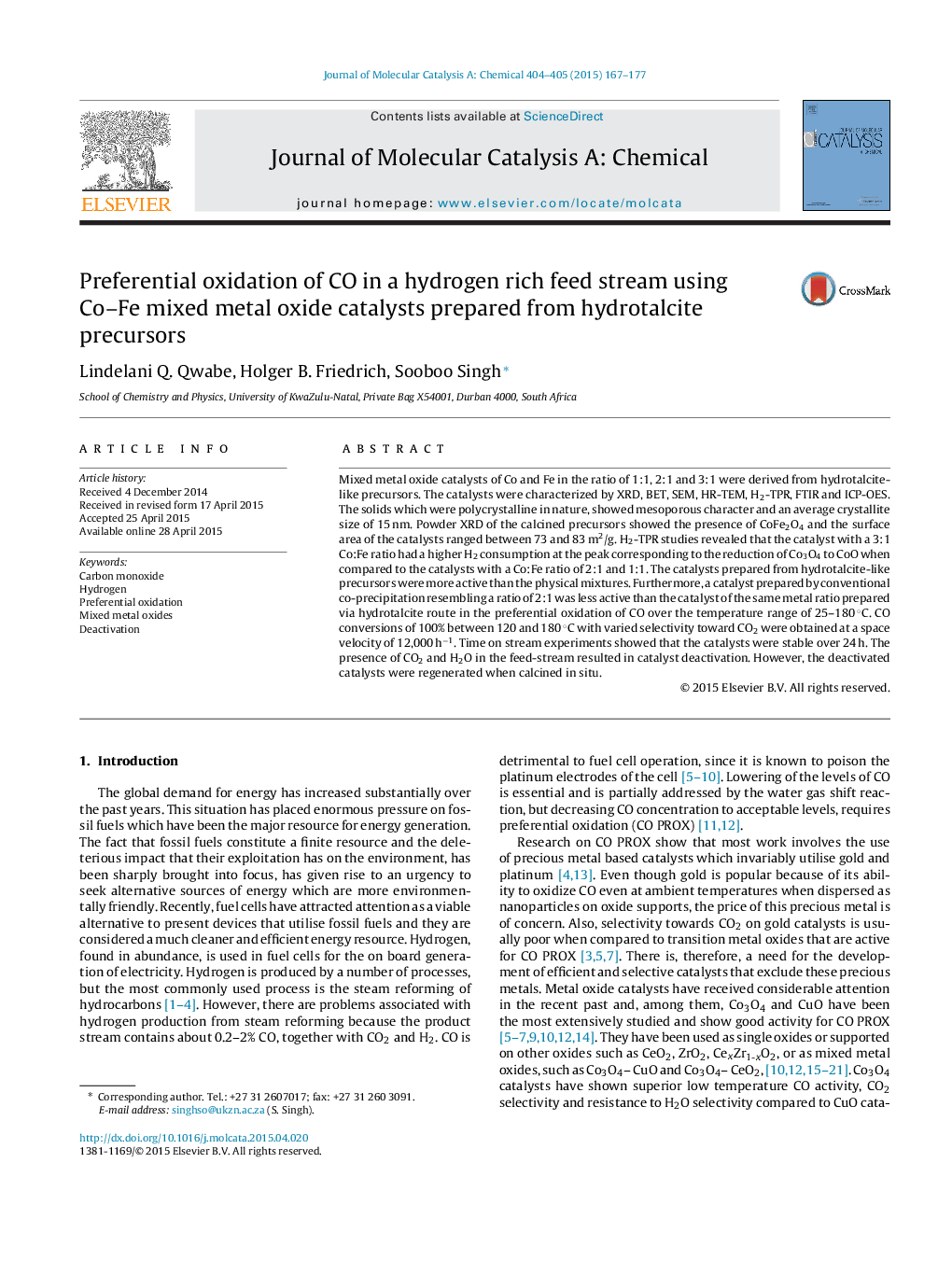| کد مقاله | کد نشریه | سال انتشار | مقاله انگلیسی | نسخه تمام متن |
|---|---|---|---|---|
| 64911 | 48374 | 2015 | 11 صفحه PDF | دانلود رایگان |

• Preparation of Co–Fe mixed oxides from Co–Fe hydrotalcite-like precursors.
• All catalysts showed 100% conversion within the CO-PROX temperature range.
• Catalyst activity was dependent on the concentration of the respective metals.
• Catalysts deactivated in the presence of CO2 and H2O, but had capacity for in situ regeneration.
Mixed metal oxide catalysts of Co and Fe in the ratio of 1:1, 2:1 and 3:1 were derived from hydrotalcite-like precursors. The catalysts were characterized by XRD, BET, SEM, HR-TEM, H2-TPR, FTIR and ICP-OES. The solids which were polycrystalline in nature, showed mesoporous character and an average crystallite size of 15 nm. Powder XRD of the calcined precursors showed the presence of CoFe2O4 and the surface area of the catalysts ranged between 73 and 83 m2/g. H2-TPR studies revealed that the catalyst with a 3:1 Co:Fe ratio had a higher H2 consumption at the peak corresponding to the reduction of Co3O4 to CoO when compared to the catalysts with a Co:Fe ratio of 2:1 and 1:1. The catalysts prepared from hydrotalcite-like precursors were more active than the physical mixtures. Furthermore, a catalyst prepared by conventional co-precipitation resembling a ratio of 2:1 was less active than the catalyst of the same metal ratio prepared via hydrotalcite route in the preferential oxidation of CO over the temperature range of 25–180 °C. CO conversions of 100% between 120 and 180 °C with varied selectivity toward CO2 were obtained at a space velocity of 12,000 h−1. Time on stream experiments showed that the catalysts were stable over 24 h. The presence of CO2 and H2O in the feed-stream resulted in catalyst deactivation. However, the deactivated catalysts were regenerated when calcined in situ.
Figure optionsDownload high-quality image (124 K)Download as PowerPoint slide
Journal: Journal of Molecular Catalysis A: Chemical - Volumes 404–405, August 2015, Pages 167–177